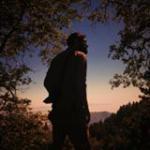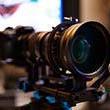Leaderboard
Popular Content
Showing content with the highest reputation on 01/31/2014 in Posts
-
Motorised slider technique
Michiel78 and one other reacted to KrisOnline for a topic
Hey guys, Been following EOSHD for ages, and sometimes get to implement things I've learnt on here, at work (for a small DLSR based production company). I wanted to share a recent experience we had in the office when testing out the DitoGear OmniSlider which we saw the review for on the main EOSHD blog. We were playing around with the "repeat movement" programming we stumbled across a pretty cool technique - something we then went on to use on a paid client job! Check it out:2 points -

Cooke Panchro/i PL Cinema Lenses - first look
Ben Corwin reacted to Andrew Reid for a topic
You do have a point actually, because most cinema lenses are used stopped down to T5.6! With 4K I will be stopping down more often than not because if your focus is off even by a small amount, people will notice with that kind of resolution on screen. But the T2.0 aperture of the bigger S4s is another option, because the look of a fast aperture is quite different still - it's not all about low light. With the Cooke stuff and Hollywood, price doesn't really come into the equation so much as outright performance. Even the most expensive lenses and camera equipment are small change for the film industry as a whole compared to other costs. The T2.0 aperture is the important bit for them. Don't forget in the days of film (still with us) cinematographers didn't have the sensitivity they do with digital either!1 point -

Sony A7R review - does it replace a DSLR or Micro Four Thirds camera?
Andrew Reid reacted to Brenton Oechsle for a topic
THANK YOU for this review. You have saved me from renting the a7r to test against the BMCC. The ranking of picture quality alone is invaluable for putting it into perspective. I can now rest in peace with my BMCC.1 point -
Cooke Panchro/i PL Cinema Lenses - first look
Andrew Reid reacted to Xiong for a topic
Can't wait to see some test footage of this mysterious camera and your Cooke lens in action.1 point -

Cooke Panchro/i PL Cinema Lenses - first look
Richard Gillespie reacted to Andrew Reid for a topic
I remember seeing some older Cooke lenses from the 60's and 70's on eBay in Arriflex mount for £250 a-piece. The T2.0 stuff. Worth investigating eBay for the older lenses, as the image is sublime.1 point -
Now available! The epic 250 page EOSHD Panasonic GH3 Shooter's Guide
Andrew Reid reacted to KrisOnline for a topic
This looks great Andrew! I recently purchased your 5Dmk3 Raw shooters guide, good stuff.1 point -
Has to be Panasonic. Andrew's silence about 4K GH rumours is telling.1 point
-
From the unofficial Cooke owners club at NAB: " We did some very critical tests with Leica Summilux-C lenses, Zeiss Master Primes, and the Cooke 5/i. We put them on digital cameras, looked at how much resolution they had. We looked for color fringing and many things, like distortion, and so on. They all looked very good. We tested with the same lens projector we do for film. The lenses were all very, very close. We looked for breathing. We tested for color fringing, because that’s very critical on digital cameras–they see it. We put them all on our M.T.F. machine. They all had high M.T.F. We looked at what I call fall-off illumination, or shading–in other words, how bright it is in the center, how bright toward the edges. They were all very good. Some were a little bit better in one area, some in other areas. They were so close that it didn’t matter a whole bunch. Then we did a film test. We did this on a stage that was very well lit by a very good DP, Isidore Mankofsky, ASC. We shot a grey scale, a color chart, and then we had a set with a desk and a practical lamp. We were looking for several different things, and one of them was narcissism (double image of hot spots) and other things. We tested all of that, and there was a young lady that was supposed to be our model. Well, she got sick. She didn’t show up, and so there was a young woman there on the set. We asked her if she would be our model, and she agreed to that. She was about 27 years old, and she had no make-up on except what a normal lady would use to go out. You know, a little bit around her eyes, and she did have a little blemish on her face. The film stock used on the test was Kodak 5219. The film was developed and we projected it. It looked better with the Cooke lenses. I was trying to analyze why it looked better with the Cooke lenses. All the lenses were so close, the Leicas, the Master Primes, and the Cooke 5/I’s. Why did she look better? I analyzed it more carefully and what it is, the Leica lenses and the Master Primes have higher contrast, and they showed the blemish. Even though the Cooke lens is just as sharp, it’s not that high contrast. And it almost hid that blemish. It was almost gone. So this “Cooke Look†is a real thing. I wanted to say that. We’ve always known that–at least I always felt that–and so many people know that the Cooke look is good." I found this article interesting. The "look" comes from lower contrast and was not mentioned as noticeable except on the film test models skin portion of the test. Also, For those wondering how the sharpness compares, here is a test by lensrentals comparing still and cine lenses in which the 50mm Cooke was mentioned. www.lensrentals.com/blog/2012/01/the-great-50mm-shootout. Congrats Andrew I'm so jealous!1 point
-
@Tony Wilson That's fine I understand. I'm trying to show both lenses since I have them, and I've been using the Panasonic for over a year. Both work very well, but the new design by SLR Magic is welcome because it addresses a lot of the problems with the LA7200: - Screw threads on the front element for Diopters and Filters - Screw threads on the back for multiple adapters (48mm, 52mm, 58mm) - 3 elements, with the rear two adjustable for Near or Normal distances - Easy to disassemble for maintenance - Sharp picture from edge to edge - Solid all metal build I think for these reasons alone it's worth the money. The only negative I can see is the limiting 40mm (FF) wide end. Other than that, I can see only positives for the SLR Magic Anamorphot.1 point
-

Cooke Panchro/i PL Cinema Lenses - first look
maxotics reacted to Guest for a topic
Andrew I really like your blog and I don't want to come across like a d**k, but I've been wanting to ask you something for a while now and with this article I feel I have to. It's a genuine, respectful question - it's not intended to be confrontational: Do you need to reevaluate what EOSHD is about? From where I'm standing - admittedly the very bottom of the pile - some of the 'guiding principles' seem to be loosing prominence. From 'About EOSHD': Which leads me to a slightly more delicate question ... From the EOSHD Legal Disclaimer: If this seems out of order I apologise, but I come to this blog believing I know where you're coming from. Does the above still hold true? Associated is a pretty broad and loose term. I'm not intending to criticise you - obviously it's natural that you move onward and upward. I'd just like to get a clearer picture of where you're coming from, or perhaps where you think EOSHD is going. I think it's changing.1 point -

Cooke Panchro/i PL Cinema Lenses - first look
nahua reacted to Christina Ava for a topic
.....this is my dream of dreaaamy lens...it is known that cooke lenses make the skin tones agreeable.. basicaly it makes actors look Good! example, i was watching "true blood" and thinking how the actress playing Sookie Anna Paquin is not that "beautiful" i thought well they are using some kind of magic lens here, so i look it up in imbd, and voila they are shooting all cooke lenses and angenieux...it really compliments actors if you do any tests use real people and skin tones! and i hope the next lenses are angenieux.... :wub:1 point -

Chinese New Years 2014 - SLR Magic Anamorphot + Canon 5DmkIII RAW
nahua reacted to Sean Cunningham for a topic
F/2.8 is still totally respectable, especially solo. That's a man size stop even when you're working with a professional 1st AC, the hardest working man on a camera crew for an anamorphic motion picture, no question. That should correspond to something in the T2.9-3.0 range depending on the stills lens. For comparison's sake Boogie Nights was shot mostly between T2.8 and T4 and the more open and "dangerous" Killing Them Softly stayed between T2.3 and T2.5 to max around T2.8 even for their daylight stuff but going much below that just isn't very common because it's too hard and there's too much room for error. I'm thankful they went with a look approximating the venerable Panavision C-Series, regarding the flare. That was the look from the '70s and '80s that got me to notice there was somehow something different about certain films, especially Dean Cundey's stuff on early John Carpenter motion pictures. It's the look that continues to inspire contemporary DPs who have made sure the dance card for those lenses are always filled at the rental houses (even though, or sometimes because, or in spite of the fact that they're not clinical or overly sharp). I'm disappointed to hear what you're saying regarding the Lumix kit lens though. It's definitely on the flavorless side compared to my Nikkors and F.Zuiko but I rather like shooting it at 18mm with my Century Optics (~30mm Panavision FOV equivalent). I'm only able to be about F/4 but that's still pleasing enough and the footage surprisingly sharp and full of detail and I don't, currently, have any primes that go wider than 24mm. That's too bad. Your conclusions on the LA7200 seem totally consistent with those of Eyepatch Films and I don't think there's another more respectable or prolific LA7200 shooter or advocate around. It has always been the adapter with the most caveats and the strictest shooting methodology for acceptable results, often involving wholly un-cinematic stops unless you have some fairly rare supplementary glass or have radically modified the adapter (introducing a new set of caveats). It and the Century Optics adapter have lived lives of usefulness that far surpassed their creator's expectations or intentions and for very practical and easy to understand reasons. Pre-existing ownership is going to be about the only rationalization left.1 point

